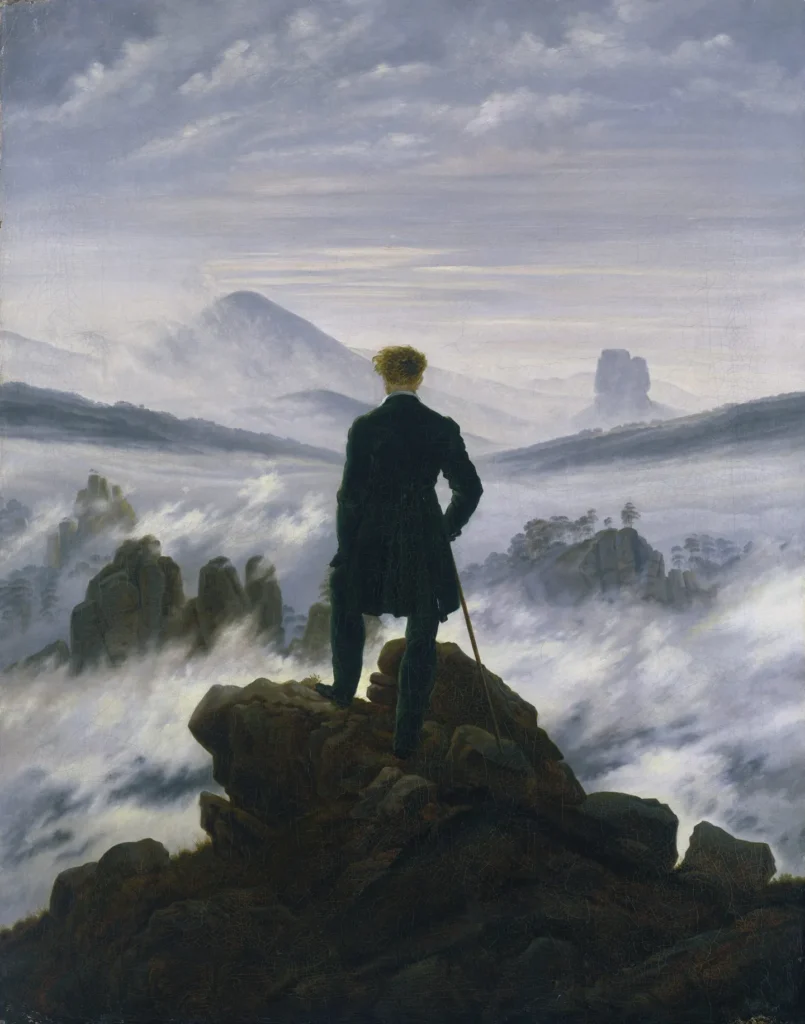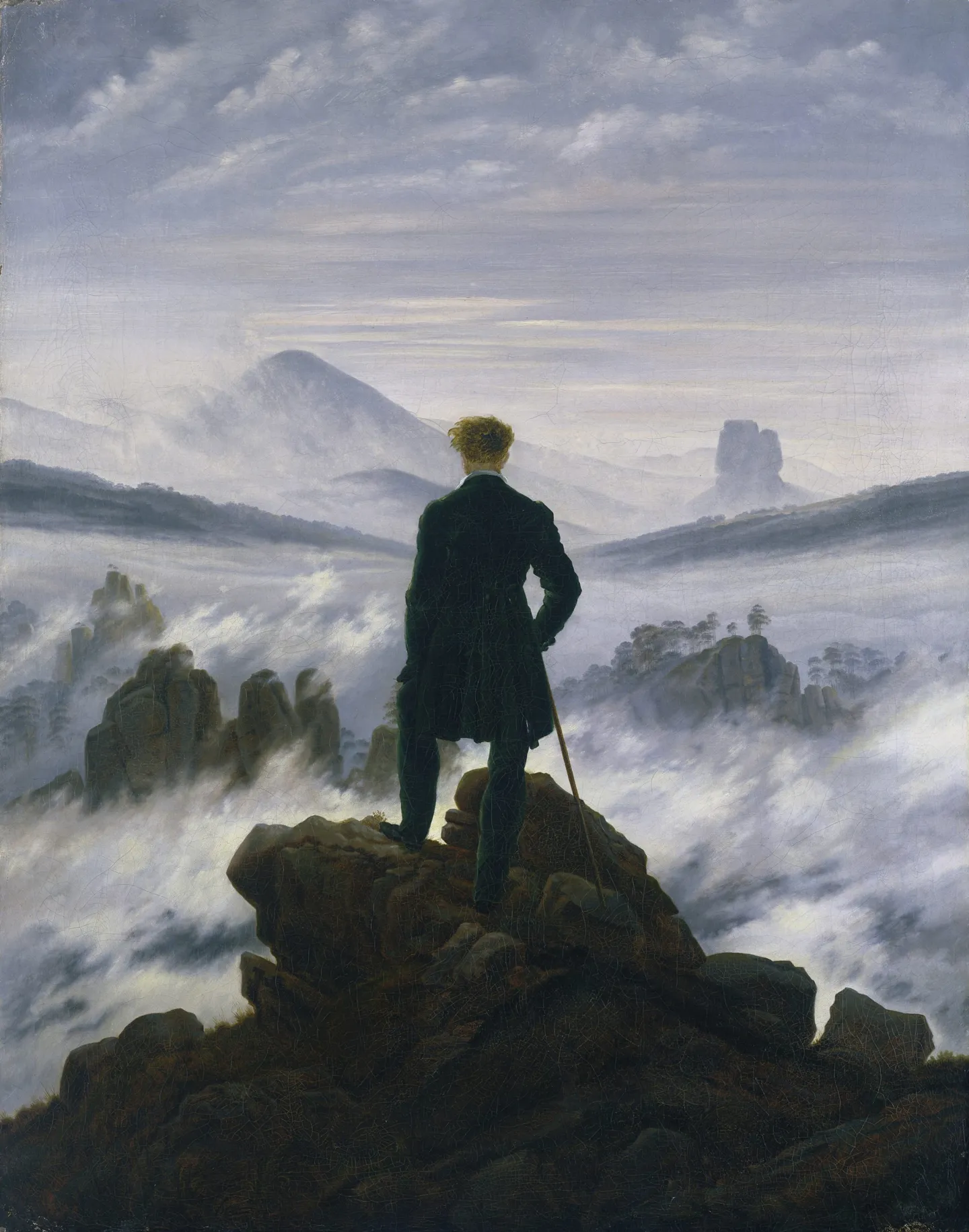The Übermensch in the Wanderer Above the Sea of Fog: Before a challenging climb, there exists, in man, an overwhelming sense of fear and respect for the mountain. Reminding him of how fragile mankind is in front of nature. However, it is the mind of man that makes him the extraordinary creation that he is. A creation that has managed to survive the harshest of times all because of his willpower and courage. Courage holds the ability to make one achieve things beyond their imagination. A painting that depicts such dramatic courage in a powerful manner is Wanderer Above the Sea of Fog (1818) by the romantic artist Caspar David Friedrich.

The humongous mountain had been a muse for painters for ages. Bringing out the frightening strength and beauty of nature altogether until Caspar David Friedrich (1774-1840) decided to controversially put a man on top of a mountain, dominating it in vanity. He boldly shifts the focus from the grand nature towards man, placing their strengths against each other. The painting showcases a man at the center of the frame.
He stands with his back towards the viewer. He appears powerful, confident and courageous against the grandeur of the landscape. He wears a dark green overcoat against the lighter shades of the landscape making him stand out and distinctively noticeable. Having just finished the climb, he is appreciating the beauty of nature with a sense of accomplishment. There is relief in his posture, he is content with himself. Calm, relaxed and fearless.
The pride of man against nature
Pride is another element along with courage in this painting. Shown in the posture itself of man, he seems to be present there to tame nature. He is the master of all creatures, the wisest and the most powerful. Friedrich meticulously places the man at the centre with two twin peaks emerging from both his sides at equal angles making it look like the hills are joyously spreading out for his welcome.
As far as the eye goes, there is no other soul but this man. He is alone, but content. He stands alone perhaps because it is not in everyone’s best interest to take up the challenge to face the diabolical atrocities of nature while they attempt to conquer it. His pride comes from knowing that he has just overcome the symbol of ultimate power, the mountain.
More than physical achievement, this painting shows a mental win. The man, while in his best shape and at the peak of youth, does not take pride in his physical strength, but his mind. Because as taxing as the task was for his body, it was his willpower that got him to the peak. This painting can also be viewed as a young man who stands tall with hope to achieve anything he desires.
It is perhaps the beginning of his journey as his head is faced towards another peak taller than the one he stands on. The journey could be exigent, but he is ready, with all his bravery, to embark upon it. The painting is felt by every viewer in their youth who aim to achieve something beyond everyone’s expectations.
The painting has been an inspiration for multiple filmmakers as they attempt to showcase the power and strength of man with a sense of duty upon his shoulders by placing him with his back to us, movies such as Inception, Battleship and After Earth are some of the few examples of it where a man is placed helpless in the unkind nature to save humanity or himself.
The Übermensch
Friedrich’s work could be seen as a portrayal of the philosophy of Friedrich Nietzsche that he discovers in his work Thus Spoke Zarathustra (1883). The man shown by Caspar David Friedrich is portrayed as the Übermensch. The Übermensch or Superman is the ultimate man who has unravelled his wisdom and his strength to himself. He is unaffected by the frail cruelty of the world by discovering his true potential.
A man against the harsh nature, which is unaccepting of him, takes the challenge to carve his own path all alone. He is fearless in front of the very nature that has been unkind to him since his birth. The journey he is about to begin is his way of rebelling against the world he is a part of. This strong characteristic shown in the posture of the man itself makes him a true example of the Übermensch. The depiction of ultimate wisdom, willpower, courage, strength and pride that was once the reason of several controversies now sets an example for the radiant youth.





